Carbonate rocks
Type of resources
Topics
Keywords
Contact for the resource
Provided by
Years
Formats
Update frequencies
Scale
-
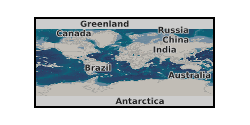
EPSRC grant EP/L012227/1: Development of Unified Experimental and Theoretical Approach to Predict Reactive Transport in Subsurface Porous Media. The effect of pore-scale heterogeneity on non-Darcy flow behaviour is investigated by means of direct flow simulations on 3-D images of Estaillades carbonate. The critical Reynolds number indicating the cessation of the creeping Darcy flow regime in Estaillades carbonate is two orders of magnitude smaller than in Bentheimer sandstone, and is three orders of magnitude smaller than in the beadpack. It is inferred from the examination of flow field features that the emergence of steady eddies in pore space of Estaillades at elevated fluid velocities accounts for the early transition away from the Darcy flow regime. Also available at https://www.digitalrocksportal.org/projects/10, DOI:10.17612/P73W2C. Further details can be found in Muljadi et al., Advances in Water Resources (2015), URL:http://dx.doi.org/10.1016/j.advwatres.2015.05.019.
-
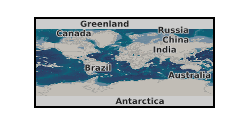
EPSRC grant EP/L012227/1: Development of Unified Experimental and Theoretical Approach to Predict Reactive Transport in Subsurface Porous Media. The effect of pore-scale heterogeneity on non-Darcy flow behaviour is investigated by means of direct flow simulations on 3-D images of Estaillades carbonate. The critical Reynolds number indicating the cessation of the creeping Darcy flow regime in Estaillades carbonate is two orders of magnitude smaller than in Bentheimer sandstone, and is three orders of magnitude smaller than in the beadpack. It is inferred from the examination of flow field features that the emergence of steady eddies in pore space of Estaillades at elevated fluid velocities accounts for the early transition away from the Darcy flow regime. Also available at https://www.digitalrocksportal.org/projects/10, DOI:10.17612/P73W2C. Further details can be found in Muljadi et al., Advances in Water Resources (2015), URL:http://dx.doi.org/10.1016/j.advwatres.2015.05.019.
-
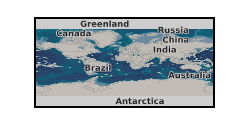
Fault lubrication during earthquake propagation in thermally unstable rocks in Central Italy Fieldwork pictures Fucino Basin Fault system: Castel di Monte fault Parasano fault Rocca Casale fault Venere fault Fieldwork pictures L’Aquila Fault System: Assergi fault Bitumen quarry Campo Imperatore Magnola fault Panoramic view Pettino fault Piani di pezza fault Vado di Corno fault Raw data from friction experiments. Links to associated papers: https://doi.org/10.1130/G35272.1 https://doi.org/10.1002/2015JB011914 http://dx.doi.org/10.1016/j.jsg.2013.10.008 http://dx.doi.org/10.1016/j.epsl.2011.09.001 http://dx.doi.org/10.1016/j.epsl.2015.09.002 http://dx.doi.org/10.1130/focus062013.1
-
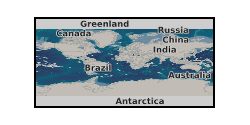
The datasets contain time-resolved synchrotron X-ray micro-tomographic images (grey-scale and segmented) of multiphase (brine-oil) fluid flow (during drainage and imbibition) in a carbonate rock sample at reservoir pressure conditions. The tomographic images were acquired at a voxel-resolution of 3.28 µm and time-resolution of 38 s. The data were collected at beamline I13 of Diamond Light Source, U.K., with the aim of investigating pore-scale processes during immiscible fluid displacement under a capillary-controlled flow regime. Understanding the pore-scale dynamics is important in many natural and industrial processes such as water infiltration in soils, oil recovery from reservoir rocks, geo-sequestration of supercritical CO2 to address global warming, and subsurface non-aqueous phase liquid contaminant transport. Further details of the sample preparation and fluid injection strategy can be found in Singh et al. (2017). These time-resolved tomographic images can be used for validating various pore-scale displacement models such as direct simulations, pore-network and neural network models, as well as for investigating flow mechanisms related to the displacement and trapping of the non-wetting phase in the pore space.
-
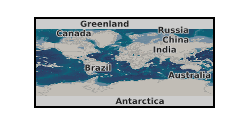
The datasets contain 5 stitched X-ray micro-tomographic images (grey-scale, doped, difference, segmented porespace and segmented micro-porespace with porespace) and 3 X-ray nano-tomographic images of a region of microporous porespace in Estaillades Limestone. The x-ray tomographic images were acquired at a voxel-resolution of 3.9676 µm using a Zeiss Versa XRM-510 flat-panel detector at 70 kV, 6W, and 85 µA with an exposure time of 0.037s and 64 frames. The X-ray nano-tomographic images were reconstructed using a proprietary filtered back projection algorithm from a set of 1601 projections, collected with the Zeiss Ultra 810 with 32nm voxel size using a 5.4keV energy quasi-monochromatic beam with an exposure time of 90s. The data was collected at Imperial College London and Zeiss Labs with the aim of investigating pore-scale microporosity in carbonates with a heterogenous pore structure. Understanding the effect of microporosity on flow is important in many natural and industrial processes such as contaminant transport, and geo-sequestration of supercritical CO2 to address global warming. These tomographic images can be used for validating various pore-scale flow models such as direct simulations, pore-network and neural network models for upscaling flow across scales.
-
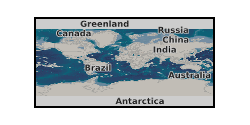
This dataset contains 10 three dimensional x-ray tomographic images of CO2-acidified brine reacting with Ketton limestone at a voxel size of 3.8 microns. It includes the unreconstructed projections (.txrm), the reconstructed images (.txm), and the masked and cropped segmented images (.am and .raw). The rock was imaged during dissolution 10 times over the course of 2.5 hours. Details can be found in Menke et al., 2015 in the journal Environmental Science and Technology.
-
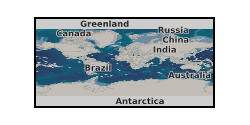
Grant: ACT ELEGANCY, Project No 271498. Medical CT scans for drainage multiphase flow through carbonate rock cores. The steady state drainage multiphase flow at elevated pressure using nitrogen and DI water, are carried out for three heterogeneous carbonate rocks to characterize the impact of heterogeneity on flow. Core Floods are performed on three carbonate rocks namely, Indiana limestone, Estaillades limestone and Edwards dolomites. Experiments are carried out using medical CT scanner and N2-water fluid system at high pressure. Drainage core floods are carried out by varying nitrogen fractional flow rates from 0 to 1. Residual trapping is obtained at the end of drainage cycle by water flooding of the core. These rocks are from three difference quarries. Indiana carbonate is from Salem Formation located in Indian, USA. Estaillades limestone is from Oppède quarry, France. Edwards dolomite is from Texas, USA. The data set contain medical CT Dry scans, nitrogen scans , water scans and scans at varying fractional flow of nitrogen; 1 readme file; 1 excel file; 27 zip files.
-
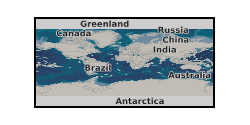
The datasets contain FIB-SEM and X-ray micro-tomographic images of a wettability-altered carbonate rock sample before and after dissolution with reactive CO2-saturated brine at reservoir pressure and temperature conditions. The data were acquired with the aim of investigating CO2 storage in depleted oil fields that have oil-wet or mixed-wet conditions. Our novel procedure of injecting oil after reactive transport has revealed previously unidentified (ghost) regions of partially-dissolved rock grains that were difficult to identify in X-ray tomographic images after dissolution from single fluid phase experiments. The details of image files and imaging parameters are described in readme file.
-
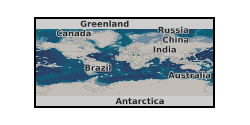
EPSRC grant EP/L012227/1: Development of Unified Experimental and Theoretical Approach to Predict Reactive Transport in Subsurface Porous Media. The effect of pore-scale heterogeneity on non-Darcy flow behaviour is investigated by means of direct flow simulations on 3-D images of Bentheimer sandstone and Estaillades carbonate. The critical Reynolds number indicating the cessation of the creeping Darcy flow regime in Estaillades carbonate is two orders of magnitude smaller than in Bentheimer sandstone, and is three orders of magnitude smaller than in the beadpack. Also available at https://www.digitalrocksportal.org/projects/11, DOI:10.17612/P77P49. Further details can be found in Bagus P. Muljadi, Martin J. Blunt, Ali Q. Raeini, Branko Bijeljic. The impact of porous media heterogeneity on non-Darcy flow behaviour from pore-scale simulation. Advances in Water Resources. 2015. http://dx.doi.org/10.1016/j.advwatres.2015.05.019.
-
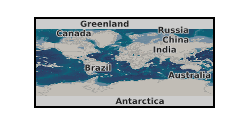
This dataset contains experimental hydrostatic testing data with ultrasonic surveys and acoustic emission data as outlined in "Panza, E., Agosta, F., Rustichelli, A., Vinciguerra, S. C., Ougier-Simonin, A., Dobbs, M., & Prosser, G. (2019). Meso-to-microscale fracture porosity in tight limestones, results of an integrated field and laboratory study. Marine and Petroleum Geology, 103, 581-595, https://doi.org/10.1016/j.marpetgeo.2019.01.043". The data is provided in a .zip folder containing 11 files, with 10 files for each mechanical tests and 1 containing all the geophysical data recorded and calculated; accompanied by a README file for introduction. Files format is Microsoft Excel Worksheet (.xlsx) and data are tabulated. Each file contains the corresponding relevant sample’s details, and each column of data is clearly labelled, units included. For each experiment, mechanical dataset recorded time, axial force, axial displacement, axial stress, confining displacement, confining pressure, axial strains A and B, circumferential extensometer, and internal temperature. Physical dataset recorded sample’s dimensions, density, compressional (P) wave arrival time and shear (S1, S2) wave arrival times; details of calculated velocities and elastic parameters are also given. Ten right cylindrical samples of limestone from the Altamura Formation sampled at Pontrelli Quarry were tested in hydrostatic compression at a range of confining pressures (Pc = σ1=σ2=σ3) from 0 to 50, or 80 MPa, at 2 MPa/min. Samples were cored either horizontal (H) or vertical (V) that is respectively sub-parallel and sub-orthogonal to bedding; the orientation is indicated in the sample’s ID. Ultrasonic velocity measurements were performed at Pc = 0, 1, 2.5, 5, 10 MPa, and then at steps of 10 MPa up to the maximum Pc value. Each sample was tested oven dried (ca. 12 hours at 40 °C followed by cooling in a desiccator for 1 hour; all prior to the hydrostatic compression). All tests were conducted at room temperature. The experiments were conducted by Dr E. Panza, M. Dobbs and Dr A. Ougier-Simonin using the MTS815 Rock Testing System in triaxial configuration in the Rock Mechanics and Physics Laboratory of the British Geological Survey. All responsible for the collection and initial interpretation of the data.
 NERC Data Catalogue Service
NERC Data Catalogue Service